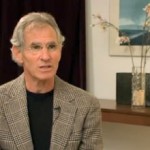 One of the most common meditation instructions is to “focus on your breath.” Why?
One of the most common meditation instructions is to “focus on your breath.” Why?
One way of breaking down meditation is into meditation with seed and meditation without seed. Let’s look at how the breath can play into both of these approaches.
Meditation With Seed
In this form of meditation, we give ourselves something to focus on. Examples of things used are a mantra, the smell of incense, the flicker of a candle, or the breath.
When we meditate in this way, we are focusing our awareness on the sensations of a particular experience. In doing so, there becomes a clear connection with idea that life flows.
Watching the pattern of smoke from an incense stick or the flow of the breath can re-wire our vantage point of life. Instead of seeing the smoke or the breath as an object, we see it as an unfolding and evolving process. Is the smoke defined by how it is seen in a particular moment, or rather, how it exists over a length of time?
This practice of meditating with seed ironically gives us both a point of focus (and a place to return to when our minds wander) and also the understanding of the ever-unfolding process that we call now.
Meditation Without Seed
In this form of meditation, there is nothing to focus on. The basic instruction for this type of meditation is “No matter what happens, don’t do anything.”
Without something specific to focus on, our minds will typically attempt to fill the void and introduce thoughts into our experience.
We are so accustomed to engaging with thought that much of the training of meditating without seed is about learning not to react to thought and instead to experience the fullness of this moment without attachment to any particular sensation.
The Breath as an Anchor
Given that our minds will tend to wander, the breath can be used as an anchor in the present moment during meditation. The breath is always there and is always changing.
Though our hearts continue to beat and our digestion continues to move, the breath is the most easily noticeable body sensation.
When we are engaged in internal conversation, we lose presence. Our awareness gets sucked into one dimension of our experience and we lose awareness of the rest of what’s happening within and around us.
When we have noticed that we are lost in thought, from that moment of noticing, we are free to redirect our awareness back to a broader sense of presence. This is where the breath comes in.
Given that the breath provides us a source of clear and constantly changing sensation, as we reconnect with it, several things happen.
1) We are reminded of the flow of all sensation.
Thought rarely flows, it’s usually a rigid and herky-jerky experience, and one that goes hand-in-hand with tension and anxiety. We quickly and easily lose grounded traction of the now as we get lost in our heads. Breathing is hardly ever herky-jerky (especially when meditating!), and tuning into the breath viscerally reminds us of the flow of all of life.
2) We return to our bodies.
Existing in thought brings our energy into our minds. Our minds are incredibly powerful, but they are just one dimension of who we are. The more we exist in our bodies, the more we are able to experience the fullness of life.
3) We are free to let go.
The breath provides the most constant physical release of energy of our bodies. Exhalation is the most regular way we let go of energy, both emotional and physical. The breath reminds us of the freedom that letting go provides, returning us to a more natural state of being.
When meditating without seed, the breath can serve as an anchor for us, reconnecting us to the flow of life. Once we have reestablished that connection to the flow of the breath, we are then welcome to let go of it and settle back in to noticing the flow of all sensation.
The breath is a powerful ally for us in meditation.
Regardless of the style of meditation you are engaged in, it can greatly aid your practice and transform your relationship to all experience.



Thanks for sharing! The breath is beautiful and so wonderful to watch. A great reminder that we are alive.